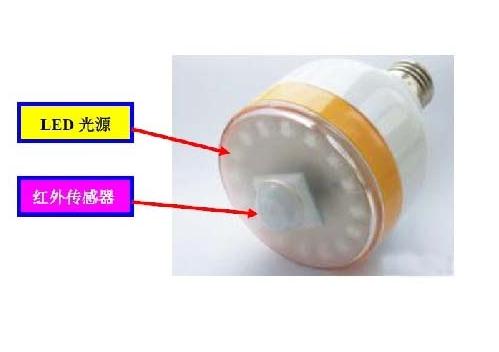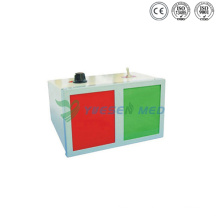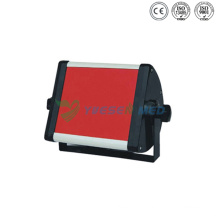Home > Industry Information > Sensor application in the industry
Sensor application in the industry
2021-05-02
 The sensor is a detection device that converts the input variable into a signal that can be measured. It is the "sensory organ" of the electrical system of the optical instrument and is the first link for automatic detection and automatic control. The sensor market is huge. In 2008, the global sensor market capacity was 50.6 billion U.S. dollars. It is estimated that the global sensor market will reach more than 60 billion U.S. dollars in 2010. As far as the world is concerned, the fastest-growing sensor market is still the automotive market, the second is the process control market, and the communications market has a good outlook. There are many kinds of sensors. According to incomplete statistics, there are 30,000 types. Pressure sensors, temperature sensors, flow sensors, and level sensors have shown mature market characteristics. The market size of flow sensors, pressure sensors, and temperature sensors is the largest, accounting for the entire market. The sensor market is 21%, 19% and 14%. The major growth in the sensor market comes from emerging sensors such as wireless sensors, MEMS (micro-electromechanical system) sensors, and biosensors.
The sensor is a detection device that converts the input variable into a signal that can be measured. It is the "sensory organ" of the electrical system of the optical instrument and is the first link for automatic detection and automatic control. The sensor market is huge. In 2008, the global sensor market capacity was 50.6 billion U.S. dollars. It is estimated that the global sensor market will reach more than 60 billion U.S. dollars in 2010. As far as the world is concerned, the fastest-growing sensor market is still the automotive market, the second is the process control market, and the communications market has a good outlook. There are many kinds of sensors. According to incomplete statistics, there are 30,000 types. Pressure sensors, temperature sensors, flow sensors, and level sensors have shown mature market characteristics. The market size of flow sensors, pressure sensors, and temperature sensors is the largest, accounting for the entire market. The sensor market is 21%, 19% and 14%. The major growth in the sensor market comes from emerging sensors such as wireless sensors, MEMS (micro-electromechanical system) sensors, and biosensors. Here we summarize the application of sensors in various industries.
I. Sensors in Medical Device Applications
1. The humidity sensor applied to the medical ventilator helps to deliver warm and humid air to make the patient feel comfortable. When water is introduced into the air, it must be monitored and controlled.
2. The force sensor applied to the infusion pump to ensure that the infusion pump and the insulin pump conduit for delivering the solution to the patient are unobstructed.
3. Sensors used in hospital diagnostic devices, such as air flow sensors to regulate the gas flow rate of the gas chromatograph, and force and position sensors to control laboratory robots. The pressure sensor is used in the pump system, the speed sensor controls the speed of the Centrifuge, and the temperature sensor controls the temperature of the sample and the cabin.
4. Airflow sensors for gas chromatographs. Medical chromatographs need to accurately monitor and regulate gas flow. Because the ceramic gas flow path in the sensor can avoid outgassing, it can improve the accuracy and reliability of the chromatograph.
5. Infrared sensors for blood cell analyzers, which can be used in conjunction with the encoder on the pump shaft when the infrared sensor is used in a Hematology Analyzer to calculate the number of rotations of the pump shaft, obstructing the passage of infrared light when the opaque objects pass through the package gap The sensor can detect it.
6. A thermistor element temperature sensor for a Blood Analyzer that monitors the temperature of the cabin, diffuser, and oil-cooled motor to prevent overheating. If there is overheating, stop it immediately to allow it to cool.
7. Sensors for monitoring instruments, pressure sensors, gas flow sensors can be used for respiratory monitoring, showing the key index of breathing. Plug-in pressure sensors are used for blood pressure monitoring and glucose monitoring.
8. A gas flow sensor (referred to as an air flow sensor) for use in anesthesia machines can measure the flow of air, oxygen, and nitrous oxide so that the gas supply to the patient is appropriate and meets the standards set by the physician. The thermistor element temperature sensor monitors the temperature/humidity of the air sent by the Anesthesia Machine. It can make the patient breathe comfortably and avoid the sore throat caused by inhaling dry cold air.
9. An air flow sensor applied to a sleep ventilator. When the patient begins to exhale, the sensor sends a signal to the sleep ventilator to reduce the speed of the ventilator fan so that the patient does not feel uncomfortable to "fight" with the machine. The humidity sensor is used to monitor the humidity of the air and accurately measure its dew point and absolute humidity or water content so as to supply the patient with suitable humidity air. This type of humidity sensor can be used with all three types of positive pressure breathing machines.
II. Automotive Industry
The key to the level of electronic control systems of modern limousine lies in the number and level of sensors used. At present, there are approximately tens to hundreds of sensors installed on an ordinary family car, and the number of sensors on luxury cars can be as high as 200 Only, the species usually reach more than 30 species, and as many as 100 species.
1. Sensors used in electronically controlled fuel injection engines 1) Intake pressure sensor: It reflects the change in the absolute pressure in the intake manifold and is a reference signal to the ECU (Engine Electronic Control Unit) to calculate the duration of fuel injection. Domestic Audi 100 car (V6 engine), Santana 2000 car, Beijing Cherokee (25L engine), Toyota Crown 3.0 sedan, etc. adopt this pressure sensor. Currently widely used is a semiconductor varistor type intake pressure sensor.
2) Air flow sensor: Measure the amount of air drawn by the engine and provide it to the electronic control unit (ECU) as the reference signal for fuel injection time. According to different measurement principles, it can be divided into rotary vane type air flow sensor (Toyota PREVIA Wagon) , Karman vortex air flow sensor (Toyota Lexus LS400 sedan), hot-wire air flow sensor (Virgo's vehicle with the VG30E Nissan Maxima and domestic Tianjin Sanfeng Bus TJ6481AQ4 installed with the Volvo B230F engine) and hot-film air flow sensor four types. The former two are volume flow types, and the latter two are mass flow types. At present, there are mainly two kinds of hot air flow sensors and hot film air flow sensors.
3) Throttle position sensor: measures the angle at which the throttle opens, provides the ECU as a reference signal for fuel cutoff, fuel/air ratio control, ignition advance angle correction; it has three types: switch contact type throttle position sensor (Santa Type 2000 passenger car and Tianjin Sanfeng Bus), linear variable resistance throttle position sensor (Beijing Cherokee), integrated throttle position sensor (domestic Audi 100 V6 engine).
4) Crankshaft angle sensor: also called crankshaft position sensor, used to detect the crankshaft and engine speed, provided to the ECU as a reference signal to determine the ignition timing and working order; there are three types: electromagnetic pulse type crankshaft position sensor, Hall effect type Crankshaft position sensor (Santana 2000 sedan and Beijing Cherokee), photoelectric effect type crankshaft position sensor. The type of crankshaft position sensor is different, and its control method and control accuracy are also different. Crankshaft position sensors are generally installed on the side of the crankshaft pulley or sprocket, some are installed on the front end of the camshaft, and some are installed on the distributor (Santana 2000 sedan).
5) Oxygen Sensor: detects the oxygen concentration in the exhaust gas and provides it to the ECU as a reference signal for controlling the fuel/air ratio near the optimal value (theoretical value);
6) Intake air temperature sensor: detects the intake air temperature and provides it to the ECU as the basis for calculating air density;
7) Water temperature sensor: detects the temperature of the coolant and provides the ECU with engine temperature information;
8) Deflagration sensor: It is installed on the cylinder body to specifically detect the deflagration condition of the engine and provide the ECU to adjust the ignition advance angle according to the signal.
9) Knock sensor: Installed on the engine block to monitor the knocking of the engine at any time. At present, there are two major types, resonant and non-resonant.
2. Sensors used in the chassis control 1) Transmission: There is a speed sensor, temperature sensor, shaft speed sensor, pressure sensor, etc., the direction of the device has a corner sensor, torque sensor, hydraulic sensor;
2) Suspension: There is a speed sensor, acceleration sensor, body height sensor, roll angle sensor, angle sensor, etc.;
3) ABS: There is a wheel speed sensor.
3. The sensors of the car body are closely related to the safety performance, mainly including the airbag sensor, the side anti-collision sensor, and the distance measuring sensor.
4. Sensors for lighting and electrical systems include light detection sensors, raindrop sensors, air conditioner temperature sensors, and seat position sensors.
In addition, vehicle chassis control, vehicle positioning/position, object detection, visual enhancement, automotive environment heating, ventilation, air conditioning and engine and transmission control, automatic adjustment of driver seat, automatic adjustment of driver seat, electronically controlled fuel injection, exhaust emission , Anti-lock braking system, headlight brightness control, etc. Electronic automatic control must rely on the sensor's information.
JRT produced the high resolution optical distance measurement sensor for 16 years with lower cost. Our distance measuring sensor have small size, high accuracy.
The laser range finder components is characterized by an above-average measured value output frequency, up to 8hz. The miniature laser distance module is also suitable for monitoring defined distance and height during transport.
Distance Measuring Sensor, Accurate Laser Measuring Sensor, High Accuracy Distance Sensor, Optical Distance Sensors
Medsinglong Medical Equipment Co., Ltd. http://www.irdistancesensor.com




